Attractions in Lestijärvi
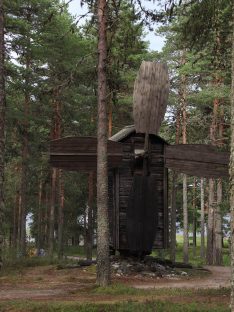
Local history museum
One of the biggest attractions in Lestijärvi is the museum that contains old buildings and historical artefacts from the area. The local history museum is located in the heart of Lestijärvi, overlooking the lake. All together there are nine buildings in the museum area such as the windmill, some old hay barns and traditional Scandinavian grain drying and threshing cabins.
When walking into the museum area, you will feel like taking a trip all back to 1784, when the museum building was built. The building is the oldest preserved log house in Lestijärvi. Therefore the house presents the characteristics of the old Finnish house building style. Back in the day the houses were painted with red ochre paint and the windowsills and corner pillars painted in white. This style can still be seen street view of Lestijärvi.
During the summertime, there is a museum guide to show you around the museum and other times you can contact the town hall to organize a visit or a guided tour to the local history museum.
See more on Facebook
Address: Rantatie 2, 69440, Lestijärvi
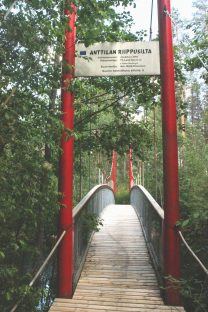
Anttilan riippusilta
The attraction of Yli-Lesti, Anttila suspension bridge joins the beautifully green forest trails on both sides of the river. The river view from the bridge is also definitely worth seeing.
The Anttila suspension bridge was built in December 2001 and has since served as one of the most popular attractions in Lestijärvi. The bridge is already a sight by itself but the river beneath it and the forest trails on both sides of the river bring even more value to it. The extensive forest trail is suitable for walking and biking and during the winter, it serves as a ski track. For many, the bridge is a nice place to catch a breath during their evening run. You can also do bird and animal watching from the bridge. It is especially good for spotting water birds and maybe even an otter.
The bridge is located in Yli-Lesti, about 8,1 kilometres from the town centre of Lestijärvi. To get to the bridge, you have to take the last left-hand turn before you get to the road bridge. There is a little sign by the road when you need to turn but look carefully so you don´t miss it. When you turn left, you can continue all the way to the end of the road until you get to the bridge’s parking lot.
Address: Jokelantie 85, 69450 Lestijärvi
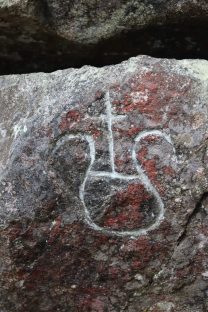
Border stone
There is a border stone in between the borders of Lestijärvi and Kinnula as a reminder of the argument between the town’s landowners in 1800´s. As we know it, the towns people in Kinnula, wanted to move the stone to acquire more land for themselves by fracturing the stone and chopping it into pieces. The attempt failed but the border stone still remains. The stone still has the markings made by a group led by Anders Nordensted. The group’s mission was to solve the argument between Lestijärvi and Kinnula. The markings are as follows: (Lochteå, AO) (Witasa, Ð) 1819.
Another story tells that the history of the stone goes all the way back to 1323. In this story the stone was a mark between the borders of Novgorod in the east and Sweden in the west.
(Source: Ihminen Erämaassa/Jari Ojala)
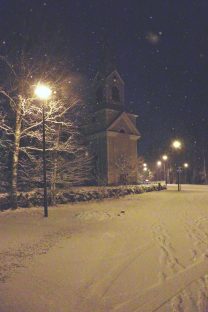
Lestijärvi church
Lestijärvi church was built in 1827 by Heikki Kuorikoski. The planning and building of the church was a long process in 1800´s because of the poverty and the war. In the beginning of 1800´s Lestijärvi was a part of the congregation of Toholampi and Lohtaja, before establishing its own in 1906. This lasted until 2007 before Lestijärvi was rejoined with the congregation of Toholampi. The church has the capacity of 400 persons. The church has beautiful window and ceiling paintings and as it is located on top of the hill, it can be seen from afar.
More information of the Lestijärvi church
Address: Lestintie 18, 69440 Lestijärvi
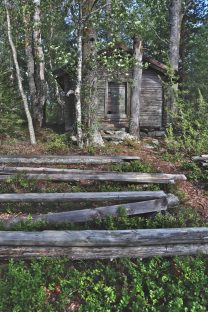
Church island – Kirkkosaari
The name Church Island comes from its use for church services, or it has been used as a temporary cemetery before moving the dead to the actual cemetery. Another explanation is that in the old days, there was a little church on the island. The most probable explanation is that the island served as a cemetery and therefore it was named after its connection with the church.
These days there is a little chapel on the island as a memorial of the previous generation´s hard work and it is a place of quiet and peace for the people moving in the waters nowadays. The chapel was a donation from Pentti and Väinö Laakso. In front of the chapel, there are benches and a wooden cross. In the chapel, there is an altar piece that says: “Tämä on varmaan Jumalan asuinsija ja itse taivaan portti. 1 Moos. 28”. Translation: “This must be God´s home and the gate to heaven. “
Church island welcomes both locals and visitors to stop and take a break from the busy world.
History of the church island
Historical findings have been made on the church island. There are five holes that refer to the Bronze or Iron Age and to animal hunting and processing in those eras. However, the island has not been further examined to determine the age or purpose of the holes. A well preserved, ball shaped mallet has been found from the island and it can be traced back 7000 years, all the way to the Mesolithic Period. This mallet´s confirmed historical purpose has remained unclear in all of Finland. Although it is suspected that it has been used for seal hunting or as an additional weight when breaking the ice of the lake.
Local history
Find out about our historical attractions in our history of Lestijärvi section.
Nature attractions
Information about our nature attractions can be found from our hiking and nature section.

